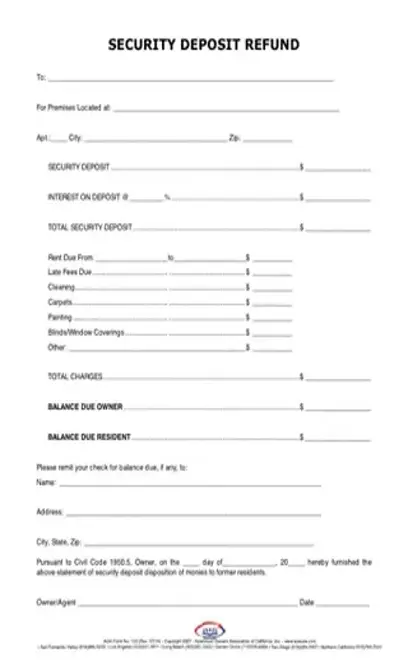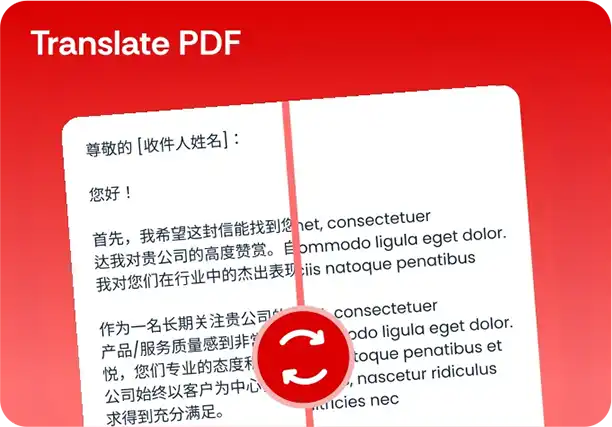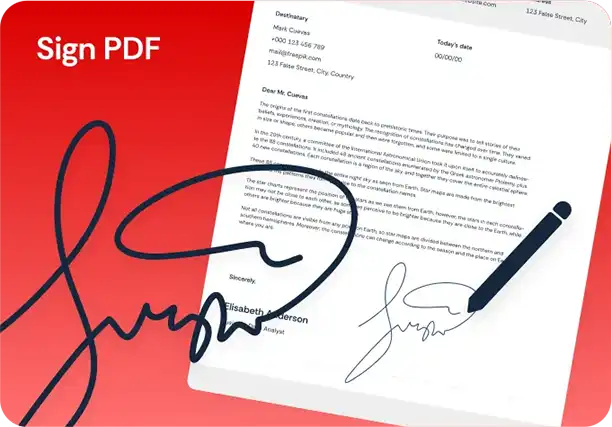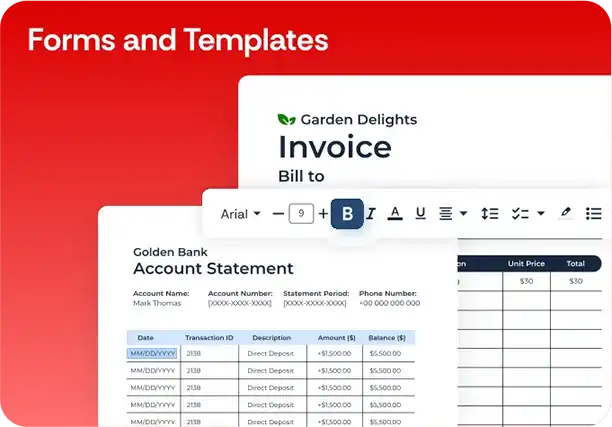Security Deposit Refund Letter Template
Stop searching and find out why people love the ease of creating beautiful and legally compliant Security Deposit Refund Letter with PDFSimpli.

Stop searching and find out why people love the ease of creating beautiful and legally compliant Security Deposit Refund Letter with PDFSimpli.





[toc] As a landlord, a person has a good number of duties and responsibilities associated with the law. One of the most common and important is the collection and return of a tenant’s security deposit. A security deposit is a way to ensure that a rental unit is kept in good condition, along with ensuring the landlord receives any payments owed before the tenant leaves. After the tenant leaves, the landlord is required to send a letter that explains the deposit balance and any deductions taken. This is called the security deposit refund letter.
This type of refund letter is related to security deposits. When a tenant first moves into a property, the landlord will require them to pay a security deposit. This deposit is used to cover any costs associated with repairing damage made to a rented property. The definition of “damage” doesn’t tend to include average wear. Landlords use this type of deposit to safeguard themselves against the need to file lawsuits for damaged property repairs.
After the tenant’s lease is up and they have vacated the property, the landlord will need to assess the condition of said property. They will need to go over the terms of the lease again, particularly any provisions regarding consequences for termination. It’s important that a landlord be sure they’ve met all leasing obligations before they fill out the letter.
When the tenant first rents the property, the landlord will walk through it with them to note the condition of all included property and appliances. After the tenant’s lease is up, the landlord will accompany them on a second walk through. This second walk through is the point at which the landlord will record any damages, comparing them to the first checklist.
All recorded damages on the second checklist will be deducted from the tenant’s security deposit. The letter will contain the amount of the original deposit, the deductions for any damages, and the amount being returned to the tenant.
These refund letters are generally filled out by any landlord who required a security deposit for the use of their property. The recipient of the letter is the tenant.
The landlord and the tenant are the major involved parties where this document is concerned. Each party should have a checklist detailing the condition that the property was in before the tenant’s lease began. Then, after the tenant’s departure, the landlord will keep another checklist denoting damages. The cost of damage repairs will be withheld from the tenant’s security deposit.
There are a few actions that should take place before the landlord fills out their refund letter:
Before the tenant moves into the property, you should walk through the space with them and make notes of the condition of everything. This helps prevent disputes over proving the condition of the property before the tenant’s stay.
After the tenant’s lease is up and they’re prepared to leave, walk through the property with them and make notes on any damages. Damage notes shouldn’t include the usual expected wear. You do have a right to take cleaning costs out of the deposit, but only cleaning costs necessary to restore the place to its pre-tenant cleanliness. Normal costs of preparing the property for a new tenant should not be taken out of the deposit.
You should review all terms of the tenant’s lease, making sure that you’ve taken responsibility for all of your obligations before you fill out the letter.
Once these steps are completed, any landlord who required a security deposit from their tenant can fill out and send the letter.
The refund letter is one of the basic legal responsibilities that a landlord has. If you received a security deposit from your tenant, you must be prepared to make documentation explaining what amount, if any, is being returned to them. You are legally required to return any of the security deposit that you didn’t use to repair damages, and to note the reason for any withholding.
The number of deductions legally allowed will vary from state to state. Some states also require landlords to pay interest on the deposit, generally between 2% and 5%. If the landlord fails to provide the tenant with an itemized list of deductions, they’ll lose the right to keep any portion of the security deposit.
[pdf-embedder url=”https://cdn-prod-pdfsimpli-wpcontent.azureedge.net/pdfseoforms/pdf-20180219t134432z-001/pdf/security-deposit-refund-letter.pdf?sv=2018-03-28&si=readpolicy&sr=c&sig=MXHnWmn0sXNXztiU%2Bugk2d7DV7KBCOuXF3oBMx0EeEw%3D”]
Note the new address of the tenant. If you’re not certain about this information, get in contact with the former tenant to ask where the letter and deposit should be sent.
Record terms related to the original lease. This includes the date it went into effect along with the date the tenant moved out. Also include the base amount of the deposit. You should record the name of the state the property resides in, along with the state law’s requirement for the number of days you have to return a deposit. To find information about this, you can contact your state’s landlord association.
Fill out the security deposit settlement chart. First, record the initial security deposit. Follow it up with any pet damage deposits and interest rates. Add these totals together.
List any expenses regarding replacements and repairs. If you have any photographic evidence, this might be attached to the letter.
Record any costs for cleaning and painting.
Note the cost of any missing or damaged appliances.
Note any pet-related damage and unpaid rent.
Add these totals together.
Subtract the total damages from the original deposit total. This is the refund that the tenant will receive.
Conclude with a signature, date, and a check for any refund amount.
In this case, you would not need to give the tenant a refund. However, you still need to send the letter.
Different states have different interest rates. You should look up your state’s specific security deposit laws.
Again, this varies by state.